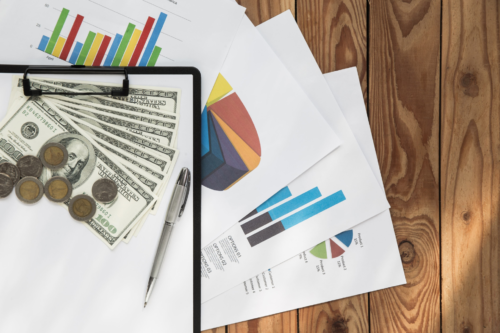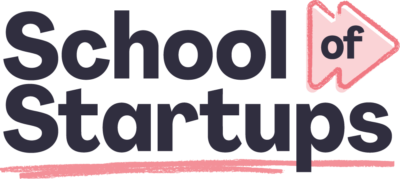What Is a Cash Flow Forecast & When Should You Create One?
Aug 2025
| TL;DR | |||
|---|---|---|---|
| See the Future, Not Just the Present- Forecasting shows when cash is coming in or going out—so you’re not caught off guard by shortfalls. | |||
| Stay in Control- Avoid cash crunches, plan confidently for payroll, and make smarter decisions about growth and spending. | |||
| Pick Your Forecasting Style- Use the direct method for real-time, short-term planning. Use the indirect method for long-term strategy and investor insights. | |||
| Build It in 9 Steps- From choosing the right model to adjusting for timing and building contingency plans—forecasting is a repeatable process, not a one-off task. | |||
| Do It Yourself or Automate It- Tools like Accountancy Cloud make forecasting easy with live financial data, scenario planning, and expert CFO support. | |||
| Big Picture- A solid forecast = better decisions, fewer surprises, and sustainable growth—even for small businesses. | |||
You might be turning a profit, but still struggling to pay the bills. That’s the power (and danger) of cash flow.
A cash flow forecast helps you see what’s ahead. It shows when money will land in your account, when it’s going out, and whether you’ll have enough to keep things moving.
From avoiding last-minute scrambles to spotting growth opportunities early, forecasting puts you in control of your business’s financial future.
In this guide, we’ll explain what a cash flow forecast actually is, why it’s essential for smart decision-making, and how to build one that works in the real world.
What Is A Cash Flow Forecast?
Cash flow forecast definition is the process of estimating how much money will move into and out of your business over a given period of time. It answers one essential question: Will we have enough cash to cover our upcoming commitments, and if not, when and why?
By using past data, current trends, and realistic projections, a simple cash flow forecast helps you stay proactive rather than reactive. Instead of discovering a cash shortfall after it’s too late, you’ll see it coming in time to act.
Done consistently, forecasting is one of the most valuable tools for maintaining business stability and enabling growth.
Why is Cashflow Forecasting Important?
Cash forecasting tools aren’t just about spreadsheets and estimates; it’s about protecting your business and making smarter decisions. Here’s what a good forecast empowers you to do:
1. Ensure There’s Always Enough Cash to Operate
From payroll to rent to utility bills, the best cashflow forecasting software helps ensure that essential expenses are covered, even during lean months or slow-paying periods. It reduces the risk of cash crunches that can halt operations or force emergency decisions.
2. Spot Cash Gaps Before They Become Problems
A well-structured forecast highlights when your outgoing cash will exceed incoming cash. This visibility gives you lead time to act, delay spending, speed up receivables, or arrange short-term finance before things go off track.
3. Make Confident Investment and Growth Decisions
Want to launch a new product, hire a new team, or expand locations? A cash flow forecast tells you whether the timing is right and whether you’ll have the funds to sustain those moves beyond the initial push.
4. Strengthen Risk Management and Financial Discipline
Forecasting supports tighter financial control by helping teams stay within budget, justify larger expenditures, and build reserves for unexpected costs. It makes strategic planning more grounded and less speculative.
What Are the Key Components of a Cash Flow Forecast?

A forecast is only as strong as the inputs it relies on. These are the core elements for how to do cash flow forecast:
1. Projected Cash Inflows
Include all expected sources of income, customer payments, subscription revenue, grants, loan disbursements, and any investment injections. For accuracy, account for payment delays and actual billing cycles (not just sales made).
2. Estimated Cash Outflows
List every expense you expect during the forecast period. This includes fixed costs (salaries, rent, software tools) and variable costs (inventory, marketing campaigns, commissions, etc.). Don’t forget tax obligations and loan repayments.
3. Opening and Closing Balances
Your opening balance is your available cash at the start of the forecast period. Once inflows from current assets and outflows are added, the resulting figure becomes your closing balance, and your opening balance for the next period.
4. Non-Operating Cash Movements
Include large one-off items not tied to daily operations. These could be asset purchases, dividend payments, debt repayments, or shareholder contributions.
Tip: Businesses that track both operating and non-operating cash separately gain more clarity into what's driving their cash position, and which activities need adjustment.
All these sound overwhelming? Here's our take on when to switch to a professional accountant and how much they cost.
How Much Time-Period Should a Cash Flow Forecast Cover?
The right forecasting period depends on what you're planning for. Most businesses use a mix of short, medium, and long-term cashflow forecasting tools to cover both operational needs and strategic vision.
| Forecast Type | Duration | Best For | |
|---|---|---|---|
| Short-term | 1–12 weeks | Monitoring weekly cash gaps, managing payroll, and making immediate spending decisions | |
| Medium-term | 3–12 months | Budgeting, tracking seasonal fluctuations, preparing for tax cycles | |
| Long-term | 1–5 years | Strategic decisions, expansion planning, investor reporting, and long-term funding | |
Why Multiple Forecasts Work Best
Short-term forecasts help you act fast. Medium-term forecasts help you manage budgets. Long-term forecasts keep your big-picture goals grounded. Together, they give you both agility and strategy, without one undermining the other.
What Are the Benefits of Cash Flow Forecast?

Cash flow forecasting isn’t just a finance exercise; it’s a strategic advantage. It gives business owners and finance teams the ability to stay ahead of cash gaps, make smarter choices, and plan confidently for growth.
Here’s how a reliable cash flow forecast improves the way you run your business.
1. Gain Visibility and Financial Control
With a clear cash forecast, you know exactly where your money is coming from and where it’s going. You’re no longer reacting to surprises; you’re planning around them.
This visibility makes it easier to control spending, pace investments, and maintain healthy cash reserves even when revenue fluctuates.
2. Make More Informed Business Decisions
Forecasting brings real numbers into your planning process, not just gut instinct.
When you can see your projected cash position, you’re better equipped to:
- Prioritise spending
- Decide when to hire or expand
- Test growth scenarios and stress-test your plans
Instead of “let’s wait and see,” your team can say, “We’ve run the numbers; let’s go.”
3. Spot Trends and Solve Problems Early
Accurate forecasting helps you identify patterns, like seasonal dips, delayed receivables, or spikes in operating costs, before they hit your bottom line.
That early warning gives you time to adjust. Whether it’s reducing discretionary spend or preparing for a lean month, forecasting lets you act before issues become threats.
4. Delay Non-Essential Spending
Pause or postpone costs that aren’t urgent, such as equipment upgrades, office expenses, or planned marketing pushes, to preserve liquidity. Delay non-essential spending like upgrades or non-urgent hires to preserve cash during tight periods. This helps maintain liquidity without disrupting core operations.
5. Accelerate Customer Payments
Follow up with clients on overdue invoices, or consider offering small early-payment discounts to encourage faster payments. Clear payment terms and automated reminders can also reduce delays and improve cash flow consistency.
6. Negotiate Supplier Terms
Speak with vendors about extending payment terms, switching to longer billing cycles, or adjusting delivery schedules to spread costs more evenly.
7. Arrange Short-Term Financing
If the gap is temporary but unavoidable, having early visibility allows you to seek a short-term loan or line of credit proactively, without the pressure of a last-minute emergency.
Which Cash Flow Forecasting Method Should You Use?
Before you start building your cash flow forecast, it helps to understand the two main methods used: direct and indirect. Each has a different focus and use case, and the right one depends on what you need to plan for.
1. Direct Method: Best for Short-Term Forecasting
The direct method looks at actual cash transactions, money in and money out. It uses real or expected payments like customer receipts, payroll, rent, and bills.
Use it when:
- You need a short-term forecast (daily, weekly, or monthly)
- You’re managing liquidity tightly
- You want real-time cash visibility for operations
Cash Flow Forecast Example: If you’re running payroll in two weeks and want to know if your bank balance can cover it, the direct method shows you clearly.
2. Indirect Method: Best for Long-Term Forecasting
The indirect method starts with net income from your profit and loss statement. Then it adjusts for non-cash items (like depreciation) and changes in working capital.
Use it when:
- You’re building a longer-term forecast (quarterly to multi-year)
- You’re planning strategic moves (investment, expansion, fundraising)
- You want to align your forecast with your financial statements
Example: If you’re preparing a 12-month forecast for an investor presentation, the indirect method provides a high-level view tied to your financial statements.
How to Make a Cash Flow Forecast?

A strong cash flow projection template helps you anticipate cash needs, make smarter financial decisions, and plan confidently for the future of your business.
This step-by-step guide walks you through the process of building one, whether you're just starting out or refining your financial operations.
Step 1: Choose the Right Forecasting Model
Start by selecting the right method for your business.
- Use the direct method if you want short-term visibility, especially for daily or weekly cash management.
- Use the indirect method for longer-term planning, especially if you're aligning your forecast with balance sheets and income statements.
The best model depends on your business size, goals, systems, and the level of detail you need. Align it with how your team tracks performance and makes decisions.
Step 2: Gather Historical Data and Sales Trends
Look for trends in customer payments, cost spikes, or months with low cash flow. For a new business, the more accurate your baseline, the better your forecast will be.
- Past sales and receivables
- Recurring and one-off expenses
- Seasonal patterns and market fluctuations
Look for trends in customer payments, cost spikes, or months with low cash flow. The more accurate your baseline, the better your forecast will be.
Tip: Use accounting software like Accountancy Cloud or spreadsheets to quickly track historical inflows and outflows across relevant timeframes.
Step 3: Project Cash Inflows
Now estimate how much money will come in during the forecast period. This could include:
- Customer payments
- Recurring subscriptions
- Loans or credit facilities
- Grants, investments, or other income sources
Make your assumptions realistic, don’t overestimate. Base them on payment history, sales pipeline strength, and typical collection periods.
Step 4: Estimate Cash Outflows
List out every expected expense. Break this into categories such as:
- Fixed costs: rent, salaries, subscriptions
- Variable costs: raw materials, advertising, sales commissions
- Financial outgoings: taxes, loan repayments, capital expenditures
Account for both regular and occasional payments. Being thorough here prevents surprises and gives you a clear view of your minimum required cash reserves.
Step 5: Calculate Opening and Closing Cash Balances
Add projected inflows to the starting cash balance
To calculate the closing balance:
- Add projected inflows to the opening balance
- Subtract total outflows
Repeat this for each period (weekly, monthly, quarterly) to map out your cash position over time. This tells you whether you’ll run a surplus or face a potential shortfall.
Step 6: Adjust for Payment Timing and Terms
Forecasting isn’t just about amounts; timing matters too.
- Align expected inflows with actual payment terms and customer behaviour
- Do the same for outflows based on supplier agreements
- Consider delays due to weekends, holidays, or transfer times
This step gives your forecast accuracy. It prevents gaps where you may show a profit on paper but have insufficient cash on hand.
Step 7: Calculate Net Cash Flow
Your net cash flow is simply:
Cash Inflows – Cash Outflows = Net Cash Flow
This figure shows whether your business is generating or consuming cash during the forecast period. If it’s negative, you need to plan how to bridge the gap. If it’s positive, you can consider reinvesting, saving, or paying down debt.
Step 8: Build Contingency Plans
Even the best forecasts need a backup plan to avoid common mistakes in cash flow. Use scenario planning to answer questions like:
- What if sales slow down?
- What if a key client delays payment?
- What if costs spike unexpectedly?
Create contingency actions such as:
- Delaying non-essential spend
- Tapping into emergency credit
- Accelerating collections
- Negotiating new supplier terms
This gives you options before challenges become crises.
Step 9: Use Rolling Forecasts for Agility
Cash flow isn’t static, so your forecast shouldn’t be either.
A rolling forecast updates regularly, for example, every month, to reflect actual performance and new assumptions. This gives you a living, evolving view of your cash position and lets you course-correct early.
Rolling forecasts also help you compare actual vs. projected numbers and build trust in your process over time.
Or Let Accountancy Cloud Handle It for You
Cash flow forecasting doesn’t have to live in a spreadsheet or on your to-do list.
At Accountancy Cloud, we help growing businesses take control of their cash with real-time forecasts, automated financial reporting, and dedicated support from expert accountants and CFOs. Whether you’re planning for runway, preparing for investment, or just tired of chasing numbers, we’ve built a platform that brings it all together.
- Get custom forecasts powered by your live financial data
- Track inflows, outflows, and net cash in real time, not month-end
- Plan for multiple scenarios and spot gaps early
- Integrated with Xero, QuickBooks, Sage, Shopify, Stripe, and more
You can build it yourself, or get it all set up, updated, and explained for you. Either way, your business runs better when your cash position isn’t a mystery.
Ready to forecast with confidence?
Talk to Accountancy Cloud and see how we can support your next move.
Conclusion
A solid cash flow forecast helps you do more than just track numbers. It gives you the clarity to align business plans with actual cash flows, prevent cash shortages, and manage money with confidence.
Whether you’re using direct cash flow forecasting for a specific period or indirect cash flow forecasting for big-picture planning, the goal is the same, to improve the accuracy of your projections and meet your business needs.
For small business owners, this kind of insight can be the difference between steady growth and negative cash flow. The more consistently you work with your cash flow data, the better your cash flow management becomes.
Frequently Asked Questions
What is the main purpose of a cash flow forecast?
The main purpose of cash flow forecast is to estimate how much cash will come in and go out during a specific period, helping you spot cash shortages and manage expenses based on your future cash flow.
How often should a business update its cash flow forecast?
Most small business teams update forecasts monthly or quarterly, depending on their business units and planning cycles. Frequent updates improve accuracy.
What information is needed to prepare a cash flow forecast?
You’ll need your cash flow statement, past and projected cash flow data, expected cash inflows, and outflows, all aligned with your business needs and goals.
Can small businesses benefit from cash flow forecasting?
Absolutely. For small business owners, accurate cash forecasting can prevent negative cash flow and ensure they have enough funds to cover daily operations.
How does cash flow forecasting differ from budgeting?
A budget sets long-term spending limits, while a cash flow forecast shows how much cash is available during each time period, based on actual cash flows.

Educational content just for startups. As a member, you’ll get unlimited access to an extensive range of guides, blogs and advice to help you run and grow your business.


